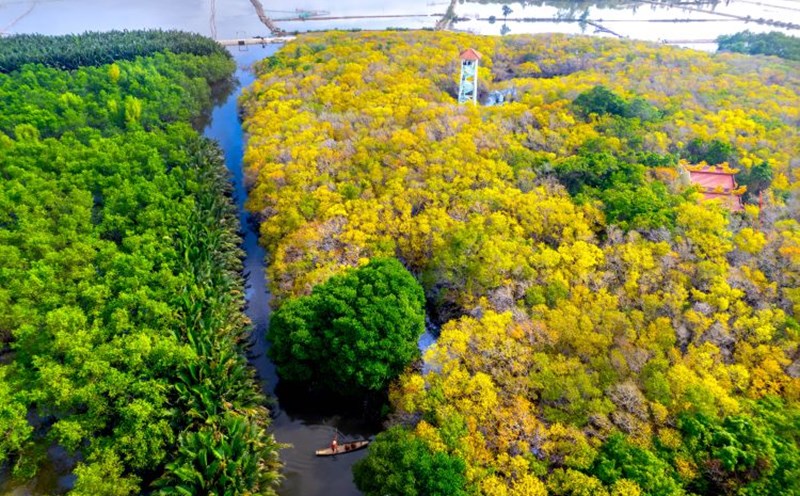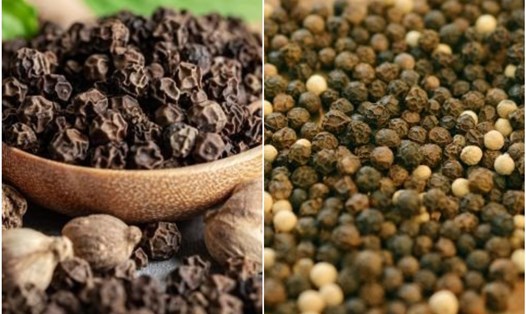TURNING OF FATE
Fate made her come to Mang Den in 2012 to seek opportunities in a new land. It is true that it was new, but that year, few people knew where Mang Den was. In 2012, Mang Den town in particular and Kon Plong district in general were still very wild, with vast lands but no one to cultivate them.
At that time, the Government's 135 program for the national goal of sustainable poverty reduction had just been implemented, and it was a hope for pioneers like Ms. Soi. When she arrived, Ms. Soi was taken by the local government to see the land that the State would grant them for settlement and farming.
That land today is a 37-household area, part of Kon Tu Rang village, Mang Canh commune, Kon Plong district. It is a piece of land in a state of wilderness and has not yet become a production and business center for tourism services such as Farmstay (tourist farm) and Homestay as bustling as it is now.

The center of Mang Den town 12 years ago was deserted, the area of 37 households assigned to people like Mrs. Soi for agricultural and forestry cultivation was even more deserted. Just less than 10km from the town center to here, it sometimes took half a day to travel because there were no roads, let alone infrastructure.
37 families came here to start a business, but over time, only a few remained. Mrs. Soi was one of those determined to explore the new land, and then found development opportunities that others overlooked. Her innate business ability told her to boldly continue when others gave up.
“I don’t know why I still chose to stay when everyone else left. At that time, many people in my family also advised me to return to Phu Quoc, because doing business there was much easier and better. My children called me all day long, advising me to return home and leave this godforsaken place,” Ms. Soi recounted in a conversation with the writer.
To make a living, Mrs. Soi opened a small grocery store that sold wholesale to the local people. One winter afternoon, the weather in Mang Den was cold, thinking about the warm sunny days in her hometown, Mrs. Soi saw the ethnic people carrying forest products to town to sell.
When they passed the grocery store, Mrs. Soi waved them in and asked: “What are you carrying to sell? Why does it smell like lemongrass?” The villagers replied: “Oh, don’t you know this wild pepper? It smells very fragrant. We pick it in the forest to sell to people in town as a delicious spice for roasting chicken and meat.”
After asking carefully, Mrs. Soi learned that the wild pepper tree is a type of woody plant that is abundant in Kon Plong. Wild pepper is harvested from this very special type of tree. Wild pepper has a characteristic aroma of lemongrass and a little bit of lemon scent, very different from other types of pepper.
This is also a medicine to treat stomachache and rheumatism. In this region, when people go to work in the fields or go to the forest for a long time, they always have to bring white salt, wild pepper and some wild leaves. These things are crushed and mixed together to create a delicious dipping sauce to eat with rice or sticky rice.
MOTHER FOUR ON THE MOUNTAIN TOWN
While listening to the story and rubbing the wild peppercorns that the locals gave her, the gentle aroma of this mountain product that she had never known before, Ms. Soi suddenly thought: "I know I can do something with this wild peppercorns and make money from it."
Mrs. Soi has never backed down from difficulties in her life. From her youth struggling to make a living in the border area of An Giang to her time as a trader on Phu Quoc Island. Now in the new land of Mang Den, where foggy all year round.
Discovering the scent of the mountains and forests, Mrs. Soi immediately thought of making a spice associated with the wild pepper that nature had bestowed. “I must make a spice salt from this unique wild pepper to sell,” Mrs. Soi thought. And not long after, an item called “Wild Pepper Salt” appeared on the market.
To get the finished product, Mrs. Soi had to spend a period of time figuring out the recipe. She used a wood stove to roast wild pepper, researching how to make this salt most fragrant, most delicious, not too salty, and not too strong in the smell of wild pepper.

After hundreds of trials and errors, Mrs. Soi finally found the recipe to create today's delicious "Wild Pepper Salt". Mrs. Soi's wild pepper salt is so "divine" that it can be used to dip many things thanks to the unique flavor of the wild pepper here, along with other auxiliary spices such as Doi seeds, Mac Khen (wild pepper flowers)...
Creating a product is difficult, bringing it to consumers and being accepted is even more difficult. It also took several years to wait for Mang Den to become a new tourist destination, the number of tourists coming increased, and for Ms. Soi's "Forest Salt and Pepper" to become famous.
With its quality, uniqueness and novelty, Mrs. Soi's "Forest Salt and Pepper" product was quickly welcomed by customers near and far with countless compliments. "Remembering the first day it was introduced at the fair, customers bought it and welcomed it, praising it as delicious, I was so happy that I cried because I knew I had found a business direction for myself, at the same time helping local people have a livelihood", Mrs. Soi said.
When the forest salt and pepper grains established a firm foothold in the market, Mrs. Soi was confident in her business direction. The production scale from a few kilograms per day became several hundred kilograms per month. Not only that, Mrs. Soi continued to utilize the strengths of local forest products to create new products such as green chili salt and red chili salt.
Mrs. Soi's joy is not seeing the profits, but that her products have become a tourist specialty of Mang Den, bringing sustainable development to local people when growing and exploiting local forest products to make goods.
From the initial wild salt and pepper, now Ms. Soi has moved on to opening a flower and fruit farm to provide seedlings, flowers and fruits for Farmstays, homestays and tourist resorts in Mang Den. These expansions have created a stable source of employment for local workers.
Mang Den today has become one of the most popular tourist destinations, with its unique characteristics helping Mang Den become a bright spot on the Vietnamese tourist map. The roads today are wider and paved straight. The natural weather is no longer harsh but still retains the soul of the highland mountains and forests.
To have Mang Den of today, there are people who have been making this land more beautiful and more livable every day, with their love and their tireless creative labor. One of them is Mrs. Tran Thi Soi, who is affectionately called “Ma Tu” by the people.










